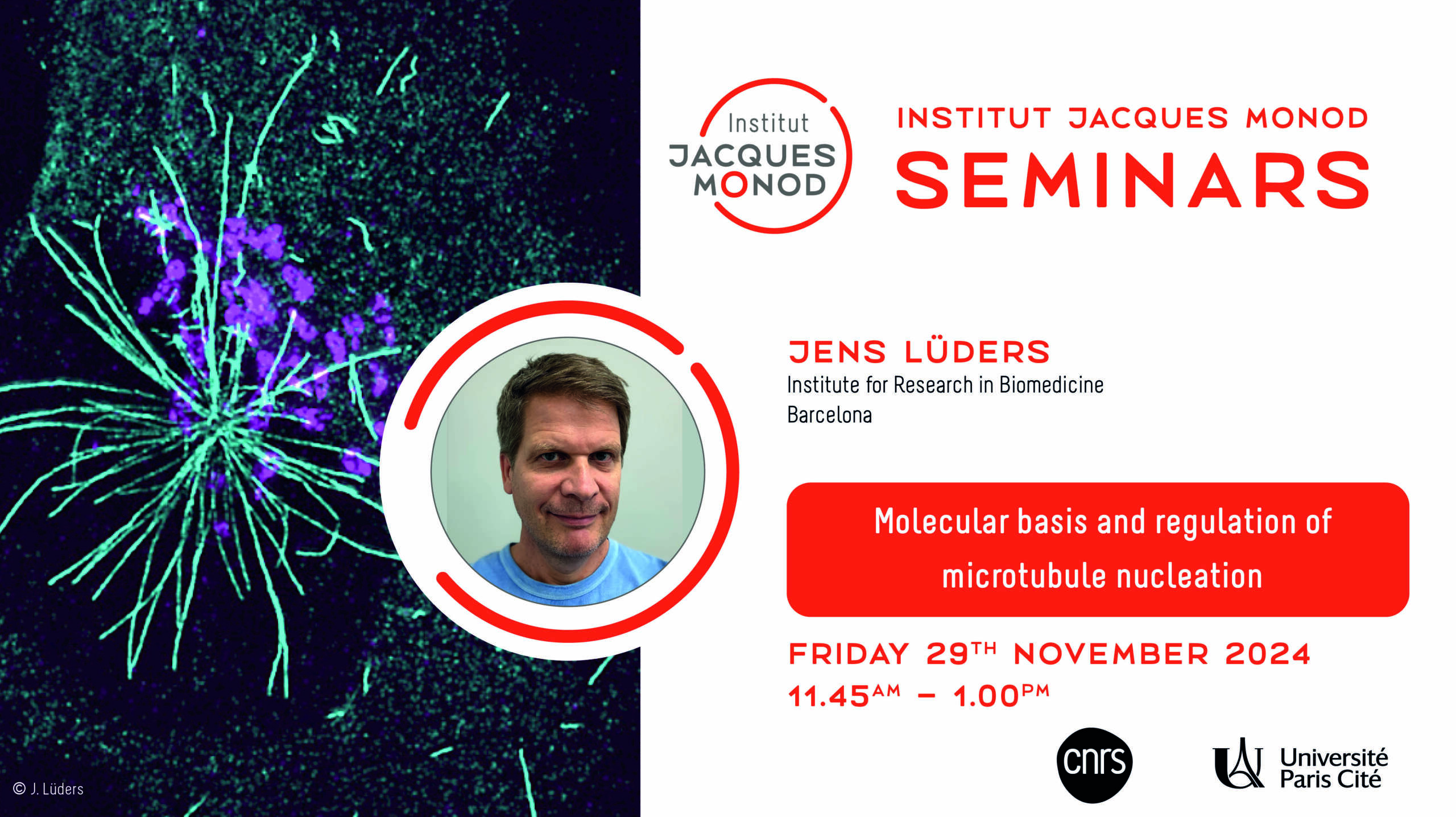
- Cet évènement est passé.
Séminaire de l’Institut Jacques Monod – Jens Lüders

Invité par l’équipe Conduit, Jens Lüders (Institute for Research in Biomedicine Barcelona) présentera un séminaire de l’Institut Jacques Monod sur le thème :
Molecular basis and regulation of microtubule nucleation
Résumé :
Formation of new microtubules, termed nucleation, is at the heart of organizing, maintaining, and remodeling complex microtubule networks. For this reason, cells tightly control microtubule nucleation in space and time. While microtubules can assemble spontaneously in vitro, in cells this process requires a nucleator. The main microtubule nucleator is the multi-subunit, cone-shaped g-tubulin ring complex (gTuRC), which has been proposed to nucleate microtubules by a template mechanism. However, the molecular details underlying its activity and how it is regulated to nucleate microtubules with 13-fold symmetry has remained poorly understood.
In my seminar I will present our recent advances in elucidating this process through the generation of recombinant gTuRC and its structural and functional analysis using cryo-EM as well as in vitro and cell-based assays. Key to reconstitution of recombinant gTuRC was the inclusion of the chaperone-like RUVBL1/2 complex in the recombinant expression system, which greatly improves multi-subunit complex assembly. Surprisingly, we found that gTuRC has a splayed structure that does not match microtubule symmetry and appears to be a poor nucleation template. However, when bound to an activator, the centrosomin motif 1 (CM1) of the gTuRC adapter protein CDK5RAP2, gTuRC acquires the ability to adopt microtubule-like conformations and becomes an efficient nucleator. Activation involves binding of multiple CM1 dimers to five distinct sites around the outside of the gTuRC cone, which modulates lateral interactions among the GCP subunits that form the cone-like structure. This facilitates microtubule-like conformations and release of luminal actin that is integral to non-activated gTuRC.
We propose a model where generation of gTuRC with an expanded conformational range, rather than perfect symmetry, is sufficient to boost nucleation activity.

